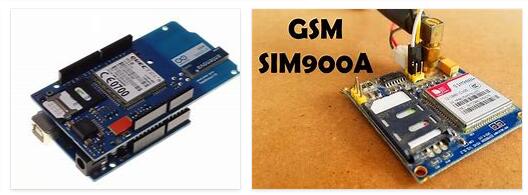
According to Abbreviationfinder.org, GSM stands for G lobal S ystem for M obile Communications (GSM), which is the digital mobile phone system most used and standard de facto for mobile phones in Europe.
The GSM system is the 2nd generation digital mobile communication system based on radio cells. It appeared to give answers to the problems of analog systems.
It was designed for voice transmission so it is based on circuit switching, an aspect that differs from the General Packet Radio Service (GPRS) system.). When carrying out the transmission by means of circuit switching, the resources are occupied during the entire communication and the pricing is by time.
Architecture of a GSM network
All GSM networks can be divided into four fundamental and well differentiated parts:
1.- The Mobile Station or Mobile Station (MS): It consists in turn of two basic elements, on the one hand the terminal or mobile equipment and on the other hand the SIM or Subscriber Identity Module.
The SIM is a small smart card that is used to identify the characteristics of our terminal. This card is inserted inside the mobile and allows the user to access all the services available from their operator, without the SIM card the terminal is useless because we cannot use the network.
2.- The Base Station or Base Station Subsystem (BSS): It serves to connect the mobile stations with the NSS, in addition to being in charge of transmission and reception. Like MS, they also consist of two differentiated elements: The Base Transceiver Station (BTS) or Base Station and the Base Station Controller (BSC).
3.- The Network and Switching Subsystem or Network and Switching Subsystem (NSS): This system is in charge of managing the communications carried out between the different users of the network; In order to do this work, the NSS is divided into seven different systems, each with a mission within the network:
- Mobile Services Switching Center (MSC): It is the central component of the NSS and is in charge of carrying out the switching tasks within the network, as well as providing connection to other networks.
- Gateway Mobile Services Switching Center (GMSC): A gateway is a translator device (it can be software or hardware that is responsible for interconnecting two networks making the communication protocols that exist in both networks understand each other. Well, the mission of the GMSC is this itself, to serve as a mediator between the fixed telephone networks and the GSM network.
- Home Location Registrer (HLR): The HLR is a database that contains information about users connected to a certain MSC. Among the information stored by the HLR we mainly have the location of the user and the services to which they have access.
- Visitor Location Registrer (VLR): Contains all the information about a user necessary for that user to access network services. It is part of the HLR with whom it shares functionality.
- Authentication Center (AuC): Provides the necessary parameters for user authentication within the network; it is also responsible for supporting encryption functions.
- Equipment Identy Registrer (EIR): It is also used to provide security in GSM networks but at the valid equipment level. The EIR contains a database with all the terminals that are valid to be used in the network.
- GSM Interworking Unit (GIWU): Serves as a communication interface between different networks for data communication.
- The Operation and Support Subsystems or Operation and Support Subsystem (OSS): The OSS are connected to different NSS and BSCs to control and monitor the entire GSM network.
The figure shows a small diagram of the above:
Features
GSM offers Supplementary Telephony Services such as:
- Calling subscriber identification
- Call redirection
- Call waiting
- Busy user call termination
- Closed user groups
Pricing
The charging for use of the GSM Network is carried out depending on the service it is supporting.
In this sense, the realization of a voice or data communication through this service is constituted by a cost of establishing the communication and by a cost that is a function of the time during which it remains established.
Usually, time slots are established in which different rates are applied.
Depending on the network operator, this pricing can be established in different ways:
- Call establishment
- With establishment fee
- No setup fee
- Call continuation
- Pricing by steps or Pricing Units (it has a fixed cost, and a variable time duration depending on the time slot).
- Pricing per second (its cost is variable depending on the time slot in question).
In the case of sending short messages (<150 characters), there is an established fixed rate.